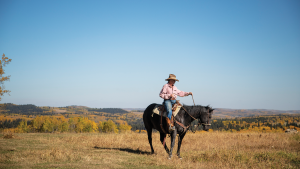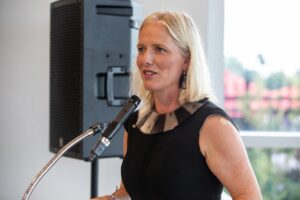From 1991 to 1994, I had a chance to travel Alberta quite a bit when I did my university degree in Edmonton. One of the spots I still remember fondly, for many reasons, is Kananaskis. We used to go there whenever
we had a chance. One of the reasons we discovered Kananaskis was that they had — and this was in the early 1990s — a fully wheelchair-friendly lodge and access to adapted cross-country ski equipment. At the time, this was groundbreaking because there weren’t really a lot of big conversations going on around inclusion, accessibility and equity.
When you are a wheelchair user who loves nature, the options are not always easy. There are obstacles and barriers. Kananaskis was one of my first experiences on my own with my skiing sticks and my muscles, and I could just go into nature. I have memories and photos of having to stop for bears or deer. I had this sense that I was on the wildlife’s turf — in their environment — and that’s why it was so, so, so precious.
I’m now a mother, and my son is nine. It is definitely in the plans to go back there in the next few years — to take him to this favourite place of mine.
Every now and then, I need to retreat — to reflect, absorb nature and just be in the moment. Kananaskis was one of those first experiences. I was in my early 20s when I began to realize that this balance is so important. I was at the beginning of my racing career, and the media attention, the pressure and the travelling — it could get intense. I needed to have balance, to find myself in nature and be active in nature.
Kananaskis is the traditional territory of the Treaty 7 Nations of the Îyârhe Nakoda First Nations of Chiniki, Goodstoney and Bearspaw; the Tsuut’ina First Nation; the Kainai, Siksika and Piikani First Nations of the Niitsitapi (Blackfoot) Confederacy; and the Métis Nation of Alberta, Region III.
– As told to Catherine Zhu





